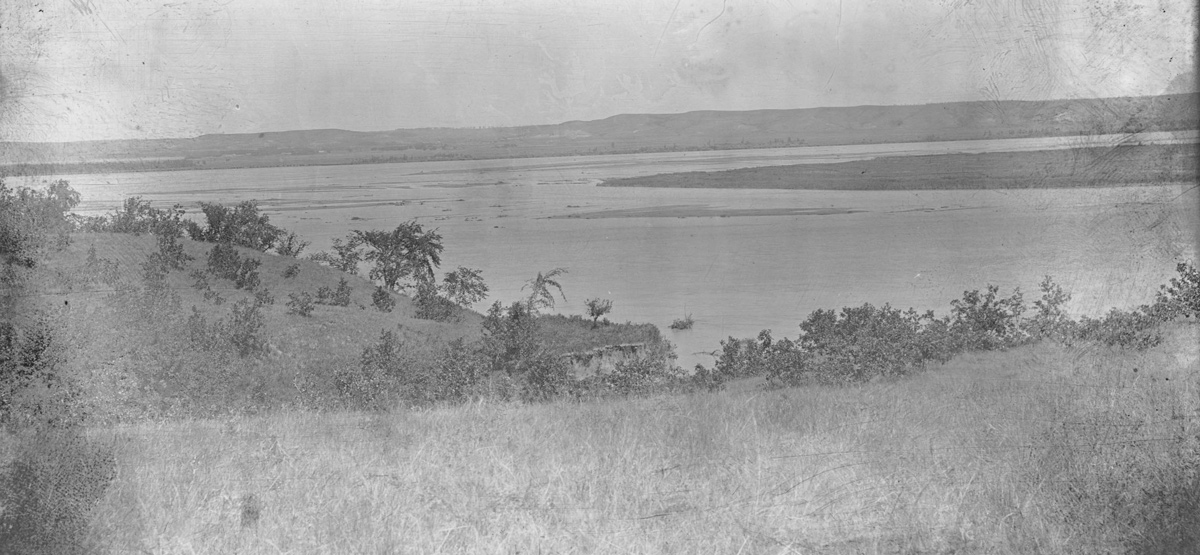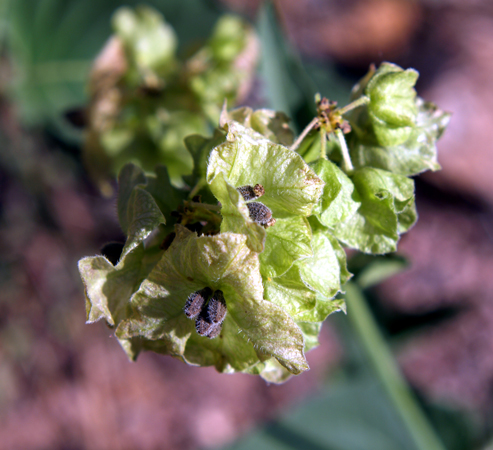The expedition leaves Pierre Dorion and the Yankton Sioux and reaches Bon Homme island, now inundated behind Point Gavins Dam. Several catfish are caught, and Lewis collects a specimen of wild four-o’clock, Mirabilis nyctaginea.
A New Species of Cottonwood
by Yellowstone Public Radio[1]Originally aired weekdays by Yellowstone Public Radio during the Bicentennial observance of 2003-2006. Narrated by Hal Hansen. Scripts by Whit Hansen and Ed Jacobson. Produced by Leni Holliman. © … Continue reading
White Bear Cliff
pass Calumet Bluff of a yellowish read & a brownish white Hard clay . . . . this (Bluff) Clift is Called White Bear Clift one of those animals haveing been killed in a whole in it
—William Clark
Plenty of Catfish
numbers of Cat fish cought, those fish is so plenty that we catch them at any time and place in the river
—William Clark
Wild four-o’clock Specimen
Open plains. Septbr: 1st 1804.
—Frederick Pursh‘s copy of Meriwether Lewis‘s label[2]Mirabilis nyctaginea, Moulton, ed. Herbarium, specimen 113.
Notes
| ↑1 | Originally aired weekdays by Yellowstone Public Radio during the Bicentennial observance of 2003-2006. Narrated by Hal Hansen. Scripts by Whit Hansen and Ed Jacobson. Produced by Leni Holliman. © 2003 by Yellowstone Public Radio. |
|---|---|
| ↑2 | Mirabilis nyctaginea, Moulton, ed. Herbarium, specimen 113. |
Experience the Lewis and Clark Trail
The Lewis and Clark Trail Experience—our sister site at lewisandclark.travel—connects the world to people and places on the Lewis and Clark Trail.
Discover More
- The Lewis and Clark Expedition: Day by Day by Gary E. Moulton (University of Nebraska Press, 2018). The story in prose, 14 May 1804–23 September 1806.
- The Lewis and Clark Journals: An American Epic of Discovery (abridged) by Gary E. Moulton (University of Nebraska Press, 2003). Selected journal excerpts, 14 May 1804–23 September 1806.
- The Lewis and Clark Journals. by Gary E. Moulton (University of Nebraska Press, 1983–2001). The complete story in 13 volumes.



